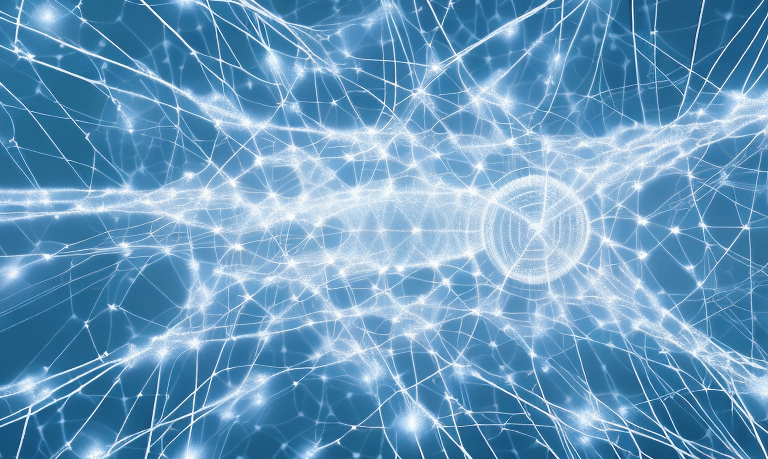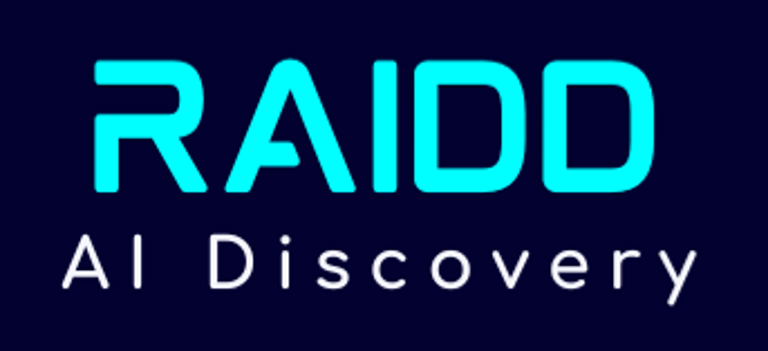The Ultimate Guide to Deep Learning - [TECHNICAL]
FOUNDATIONS - TECH


Deep learning helps computers learn to recognize patterns and make decisions, much like our brains. It's used in things like recognizing images and speech, and driving cars. Tools like TensorFlow, PyTorch, and Keras make it easier for developers to build these smart systems.
The Ultimate Guide to Deep Learning - [TECHNICAL]
Understanding the Basics of Deep Learning
Before delving into the intricacies of deep learning, it is essential to grasp the fundamental concepts. So, what exactly is deep learning?
Deep learning is a subset of machine learning that focuses on artificial neural networks with multiple layers, enabling the system to learn and make decisions by itself. These neural networks are inspired by the structure and functionality of the human brain.
Deep learning models can analyze vast amounts of data to recognize patterns, classify information, and make predictions on unseen data. It powers applications such as image and speech recognition, natural language processing, and autonomous driving.
But what makes deep learning so important in today's world?
The Importance of Deep Learning in Today's World
The significance of deep learning lies in its ability to handle intricate problems that were previously challenging for traditional machine learning algorithms. Deep learning has opened doors to numerous groundbreaking advancements in various fields.
Industries like healthcare, finance, retail, and transportation are leveraging deep learning to improve diagnostics, fraud detection, customer experience, and autonomous systems, respectively. With the ever-increasing availability of data and computational power, deep learning is poised to revolutionize even more industries.
Now that we understand the importance of deep learning, let's dive into some key terms and concepts that are frequently encountered in the realm of deep learning.
Key Terms and Concepts in Deep Learning
Before we proceed, it's crucial to familiarize ourselves with some key terms and concepts that are frequently encountered in the realm of deep learning.
Neurons: The basic unit of computation in a neural network. Neurons receive input, perform computations, and produce an output.
Layers: Deep neural networks consist of multiple layers, each responsible for extracting and transforming features from the data.
Activation Functions: Activation functions introduce non-linearity to the neural network, enabling it to model complex relationships in the data.
Understanding these key terms and concepts will provide a solid foundation for exploring the intricacies of deep learning. In the next section, we will delve deeper into the architecture of deep neural networks and the training process.
The Architecture of Deep Learning
Deep learning architecture primarily revolves around neural networks, which serve as the backbone of the entire system.
Neural networks are composed of interconnected layers of neurons. The input layer receives the data, which then propagates through hidden layers, culminating in the output layer.
Each neuron in a layer receives input from the previous layer and applies a mathematical operation to produce an output. The network learns and improves its performance through a process called backpropagation, where it adjusts the weights and biases to minimize the error.
Deep neural networks typically consist of three types of layers: input layers, hidden layers, and output layers. The input layer receives the raw data, the hidden layers perform computations, and the output layer produces the final results.
Nodes within each layer represent individual neurons and are responsible for processing the data. They receive weighted input, apply an activation function, and produce an output that serves as input for the subsequent layer.
Activation functions introduce non-linearity to neural networks, allowing them to model complex relationships in the data. Commonly used activation functions include the sigmoid, ReLU, and tanh functions.
The choice of activation function depends on the problem at hand and the neural network's architecture. Activation functions play a vital role in how information flows through the network and influences its ability to learn and make accurate predictions.
But how do these activation functions actually work? Let's take a closer look at the sigmoid function, for example. The sigmoid function takes any input value and maps it to a value between 0 and 1. This is particularly useful when dealing with binary classification problems, where the output needs to be either 0 or 1. The sigmoid function ensures that the output is always within this range, making it easier to interpret and use for decision-making.
On the other hand, the ReLU (Rectified Linear Unit) function is commonly used in deep learning architectures. It takes any input value and returns the maximum of that value and 0. This means that if the input is positive, the output will be the same as the input. However, if the input is negative, the output will be 0. This simple yet effective function helps neural networks learn complex patterns by allowing them to focus on the positive values and ignore the negative ones.
Lastly, the tanh (hyperbolic tangent) function is another popular choice for activation functions. It maps the input values to a range between -1 and 1, providing a symmetric activation function that is useful for certain types of problems. The tanh function is similar to the sigmoid function but has a steeper gradient, which can help the network learn faster in some cases.
Understanding the different activation functions and their properties is crucial when designing deep learning architectures. Choosing the right activation function can greatly impact the performance and accuracy of the network, allowing it to effectively model complex relationships in the data.
Deep Learning Algorithms
Deep learning algorithms form the core of the model-building process. These algorithms define how the neural network learns from the data and generates predictions. Let's explore some popular deep learning algorithms:
Deep learning algorithms are designed to mimic the way the human brain works, with interconnected layers of artificial neurons that process data. These algorithms are capable of automatically learning representations from data such as images, sound, and text, without the need for manual feature extraction.
Supervised Learning Algorithms
In supervised learning, the algorithm learns from labeled data, where the input and the corresponding output are provided. Common supervised learning algorithms used in deep learning include convolutional neural networks (CNNs) for image recognition and recurrent neural networks (RNNs) for sequence data.
CNNs are particularly effective in tasks such as image classification, object detection, and facial recognition. They use convolutional layers to extract features from images and pooling layers to reduce spatial dimensions. RNNs, on the other hand, are well-suited for sequential data processing, making them ideal for tasks like natural language processing and speech recognition.
Unsupervised Learning Algorithms
In unsupervised learning, the algorithm learns from unlabeled data without any explicit output. Autoencoders and generative adversarial networks (GANs) are examples of unsupervised learning algorithms widely used in deep learning.
Autoencoders are neural networks trained to reconstruct their input, acting as powerful feature extractors. GANs, on the other hand, consist of two neural networks - a generator and a discriminator - that compete against each other to generate realistic data samples. This adversarial training process leads to the generation of high-quality synthetic data.
Reinforcement Learning Algorithms
Reinforcement learning involves training the model through a reward-based system. The algorithm learns by interacting with an environment and receiving feedback based on its actions. Reinforcement learning algorithms, such as deep Q-networks (DQNs), are employed in autonomous systems and game-playing agents.
DQNs use a combination of deep learning and reinforcement learning to approximate the optimal action-selection policy for a given environment. These algorithms have been successfully applied in various domains, including robotics, finance, and healthcare, where decision-making processes can be modeled as sequential actions with long-term rewards.
Tools and Libraries for Deep Learning
Deep learning frameworks and libraries simplify the implementation of complex neural networks. Let's explore some of the popular tools and libraries used in deep learning:
TensorFlow: Google's Open Source AI Library
TensorFlow is a widely-used open-source library developed by Google that provides comprehensive support for building and deploying machine learning models, including deep neural networks. Its flexible architecture allows developers to design models for a wide range of applications.
With TensorFlow, you can leverage its extensive collection of pre-built neural network layers, activation functions, and optimization algorithms to accelerate your deep learning projects. Additionally, TensorFlow offers a powerful visualization tool called TensorBoard, which allows you to analyze and monitor the training process of your models.
PyTorch: Facebook's Deep Learning Platform
PyTorch is another popular deep learning platform that is gaining significant traction in the research and industry communities. Developed by Facebook, PyTorch provides dynamic computational graphs and is highly regarded for its ease of use and debugging capabilities.
One of the key advantages of PyTorch is its dynamic nature, which allows you to define and modify your neural network models on the fly. This flexibility makes PyTorch an excellent choice for researchers and developers who need to experiment with different architectures and ideas.
Keras: The Python Deep Learning Library
Keras, a high-level deep learning library written in Python, offers a user-friendly interface to build and train deep neural networks. It supports multiple backend engines, including TensorFlow, and provides a smooth learning curve for beginners.
What sets Keras apart is its emphasis on simplicity and ease of use. With Keras, you can quickly prototype and iterate on your deep learning models, thanks to its intuitive API and extensive documentation. Whether you are a seasoned deep learning practitioner or just starting your journey, Keras is a fantastic choice to bring your ideas to life.
In conclusion, deep learning is transforming the world of AI with its ability to process vast amounts of data and make accurate predictions. Understanding the basics, architecture, algorithms, and tools involved in deep learning will open doors to endless possibilities in various industries. So, dive into this exciting field and join the revolution!
